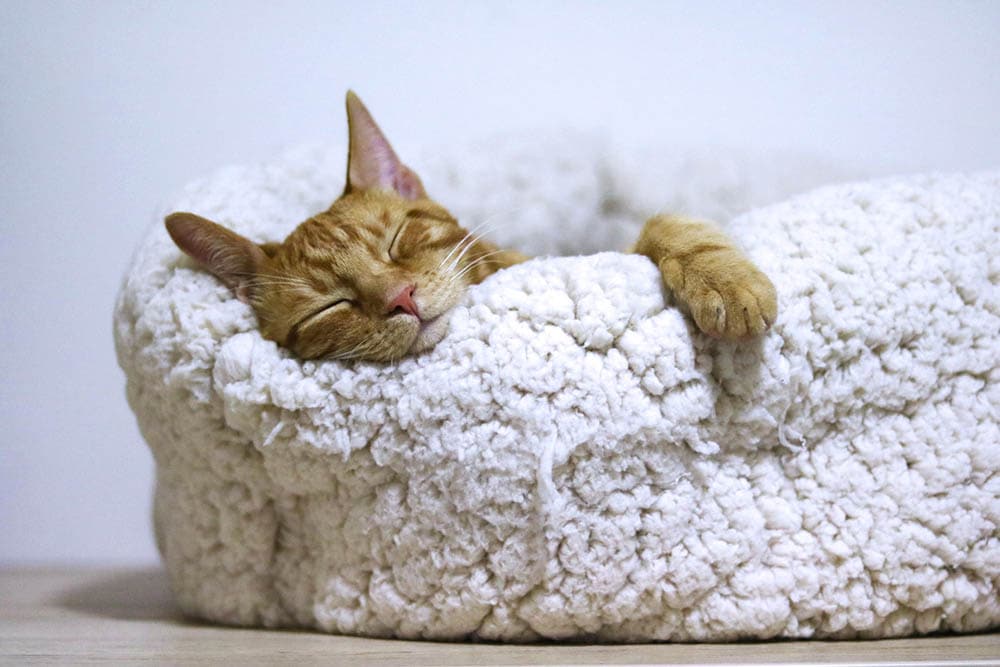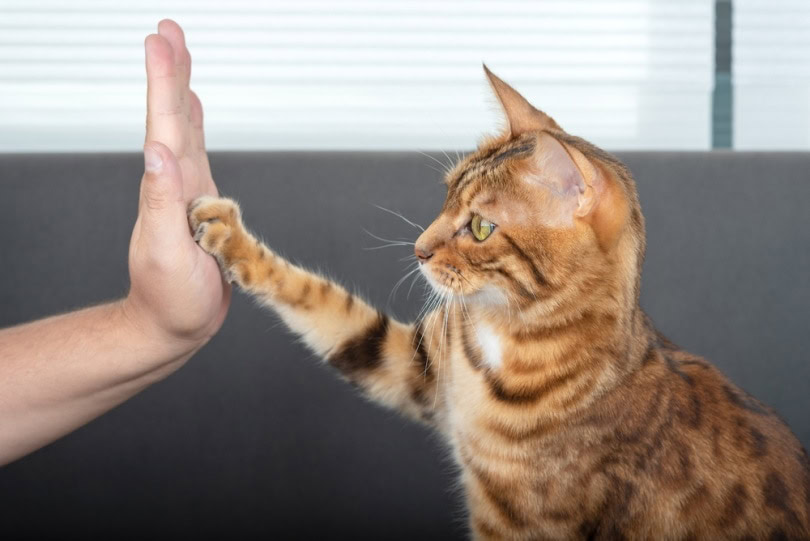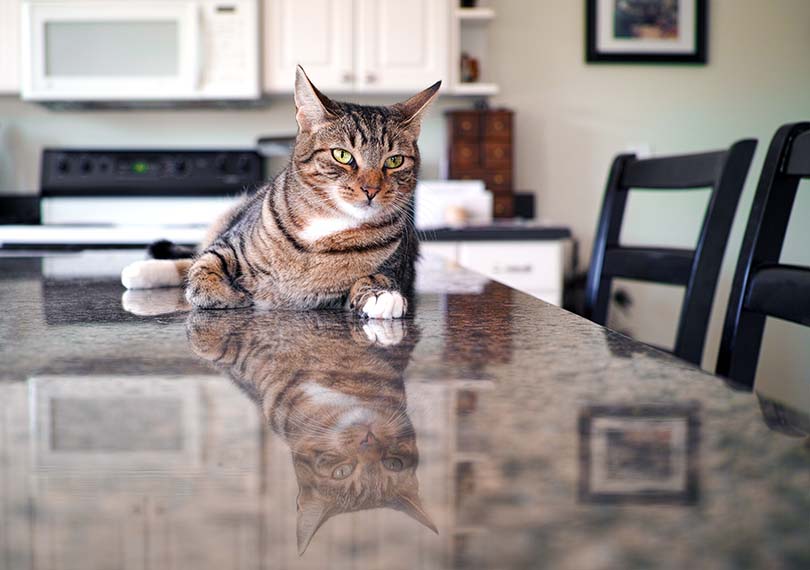VET APPROVED

The information is current and up-to-date in accordance with the latest veterinarian research.
Learn more »Click to Skip Ahead
This is an experience universal to all cat owners: you splurged on a cat bed, but your kitty doesn’t want anything to do with it. If your cat prefers cardboard boxes, hard floors, or even your computer keyboard to their soft new bed, you might be feeling pretty frustrated. All you want to do is make sure they’re comfortable (and maybe a little spoiled!). Before tossing the bed or passing it along to a friend, check out our tips on getting your cat to sleep in a new bed. It might be simpler than you think!

Before You Start
Now is an excellent time to remind yourself that cats aren’t dogs. There’s a limit to how much they can be trained. But with the right amount of patience and humor, you can probably get your cat to sleep in their new bed, at least sometimes.

The 6 Tips on How to Get Your Cat to Sleep in a New Bed
1. Choose the Right Cat Bed
Shopping for a cat bed is overwhelming. They come in all shapes, sizes, fabrics, and colors. Some are rectangles with sides, while others look like a bowl. And then there are the hooded “igloo-style” beds. How are you supposed to know what your cat will like?
Does your cat gravitate toward the same plush blanket at nap time? Do they like to hide under boxes or furniture when they sleep? Do they head for warm places like near a heating vent?
A cat that likes to burrow may like an enclosed cat bed. Most cats curl up when they sleep, so a circular or bowl-shaped bed may be better than something square-shaped. Kitties that love warmth and sunlight might appreciate a heated cat bed.
Figuring out how to show love and adoration to your cat while you're not around can be challenging. The innovative design of the Hepper Nest Bed keeps them warm, supported, and cozy. The soft yet durable foam base is lined with a removable self-warming sherpa insert, geared to get your cat through their daily naps and lounge sessions. Having a bed this effective will strengthen the bond with your feline companion, since they will be well-rested and ready for playtime when you return.
- HAPPY COZY CATS - Your kitty will bask in luxurious sherpa-lined comfort while feeling warm, safe,...
- MODERN DESIGN - Contemporary styling with upholstered fabric construction; just like your human...
- WARM FLEECE LINER - Self warming, thick sherpa fleece with microfiber trim.
At PangoVet, we’ve admired Hepper for many years and decided to take a controlling ownership interest so that we could benefit from the outstanding designs of this cool cat company!
2. Bribe Your Kitty with Treats
You can try luring your cat to their new bed with treats. Sprinkle a few treats inside their bed, so they have to enter to eat. Once they’re in bed, give them another treat, and pet them. They’ll come to associate their bed with treats and attention from you, making it a more attractive place to be.
Once they come to their cat bed on their own, you can cut back on the treats to one or two at a time. You’ll probably have a better chance of success if you use a “high value” treat that your cat only gets when they come to their bed.
If you have questions about your cat’s behavior and how to safely and effectively train them, we recommend speaking to a veterinarian.
3. Whip Out the Catnip
Catnip is a powerful attractant for some kitties. When cats smell catnip, it triggers the “feel good” receptors in their brain. When you sprinkle some catnip on your cat’s bed they may come to the bed and rub their bodies and head on it. It could be their new favorite place to chill! Alternatively, you could also place catnip-filled toys on or in the bed.
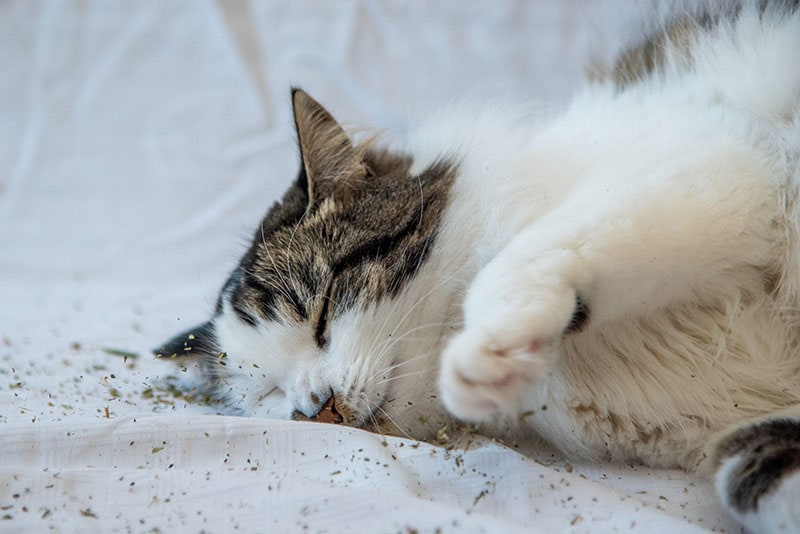
4. Elevate the Cat Bed
Cats are like noisy neighbors; they need to know what is happening at all times. Some cats like to sleep up high where they feel safe and can keep an eye on things. Cats may prefer elevated refuges to get away from dogs, children, and a busy house.
Find a safe, sturdy area to place your cat’s bed. A wide windowsill, a platform on a cat tree, or a bookshelf can all work. Be sure to clear the area so your cat can’t knock over anything like a plant or lamp when they jump into bed.
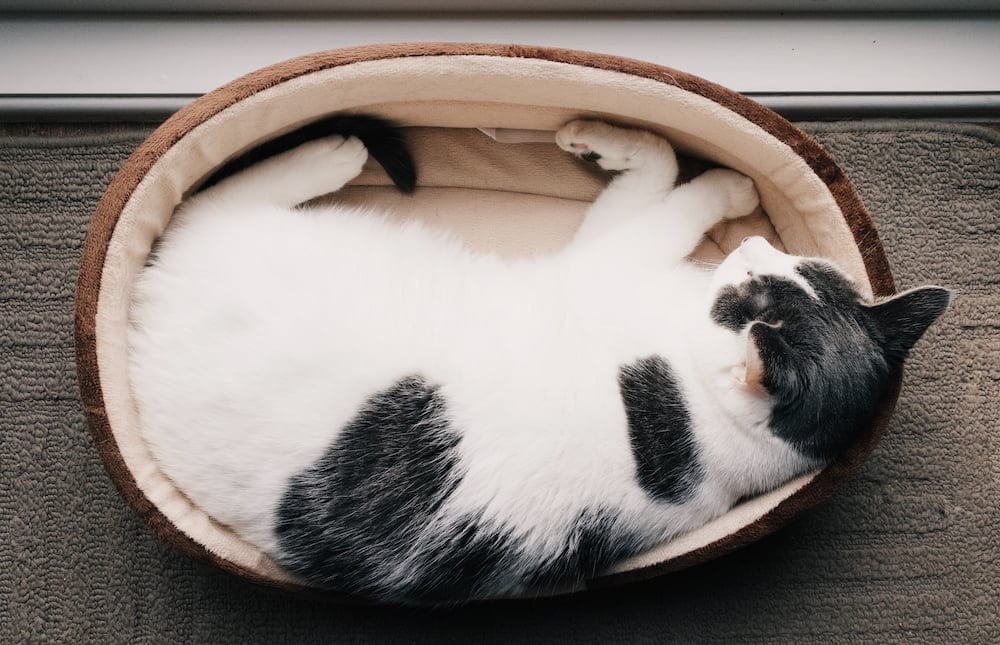
5. You May Need Multiple Beds
Some cats are more finicky than others. A cat that loves sleeping on the windowsill might suddenly start sleeping under an end table. As pet owners, we’re often left scratching our heads trying to decode kitty behavior. You might need to place multiple beds in different areas of your home and let your cat choose which one they want.
You don’t have to go overboard with this. Try placing one bed where the action is, like your living room or den. Then place a second bed in a quieter location. Your kitty can decide if they want to keep an eye on you or go off by itself for a deep sleep.
6. Make the Cat Bed Smell Like Home
The scent of a new bed may be off-putting or unfamiliar to your cat. It could smell like the factory where it was made or the store you bought it from. Cats gravitate toward familiar smells that make them feel safe. You might need a few days to make the bed smell like “home.” An easy way to do this is to place their favorite blanket on the bed. The scent will transfer to the fabric on the bed and make it more inviting to your kitty.


Frequently Asked Questions
Why Do Cats Sleep So Much?
The “drowsy cat” persona is more fact than fiction. The average pet cat sleeps an astonishing 15 to 20 hours per day. It’s a myth, however, that cats are nocturnal. They’re crepuscular, which means they’re more active at dawn and dusk.
They nap off and on throughout the day and night. Your cat’s sudden energy spurts in the evening and first thing in the morning are a matter of instinct. Wild cats hunt for prey during these hours.
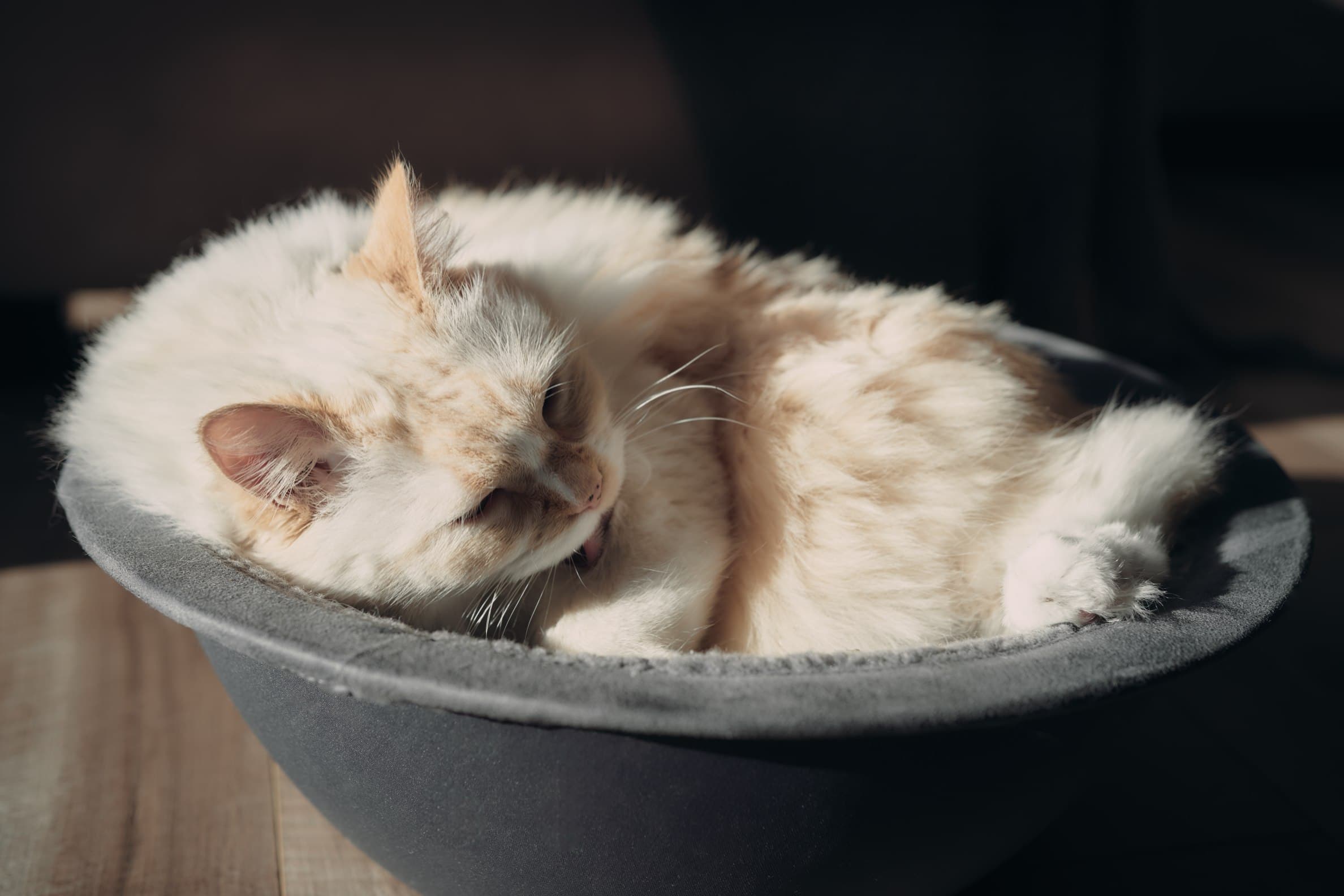
What’s the Best Material for a Cat Bed?
Most cats appreciate a plush, soft bed. Some less expensive cat beds will have scratchy fabrics. If you don’t want to sleep in it, your cat probably won’t.
It’s worth the money to buy a cat bed that has a removable liner or cover that can go in the wash.
What Size Cat Bed Should I Buy?
Cat beds are a one-size-fits-all proposition for the most part. Cats can contort themselves and may need a smaller bed than you think. Measure the space your cat takes up when they’re napping and go from there. Cats only need a few inches of wiggle room and feel snug and safe in smaller areas.


Conclusion
You can make a new bed more attractive to your cat by placing treats, catnip, and clothes that smell like home on the bed. You can also make other resting spots unattractive. Setting realistic expectations will ease your frustrations. While your cat may frequent their bed occasionally, they may not use it daily.
Featured Image Credit: Aleksandar Cvetanovic, Unsplash
